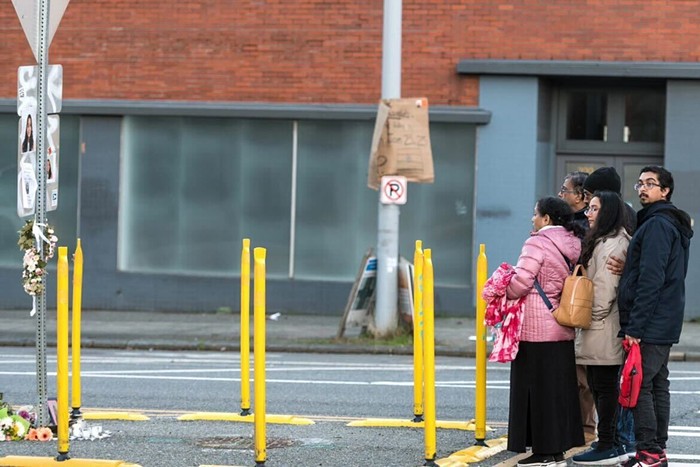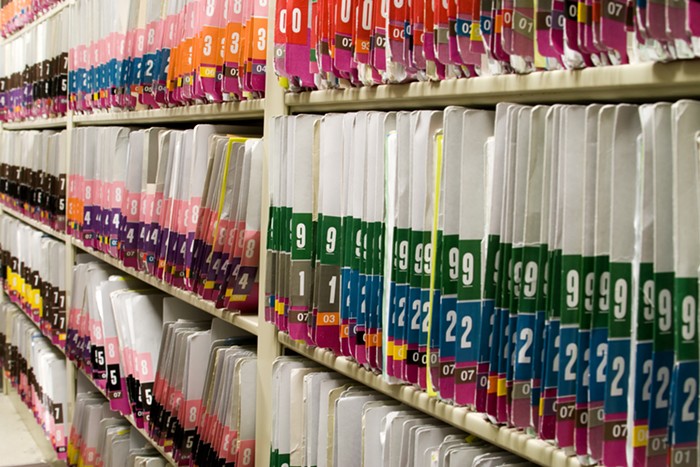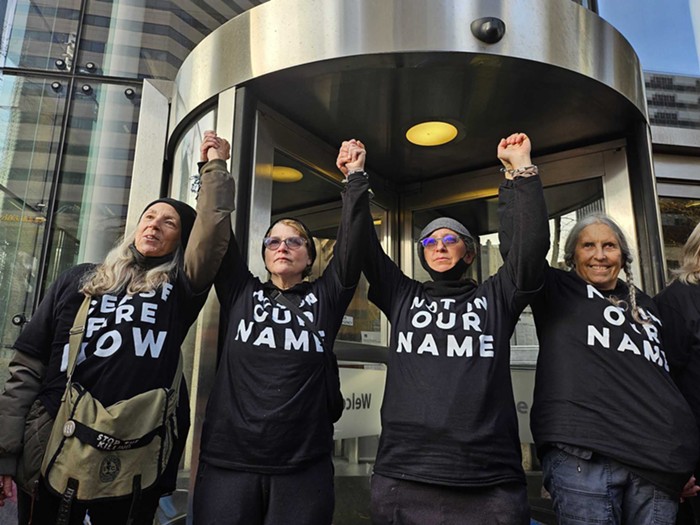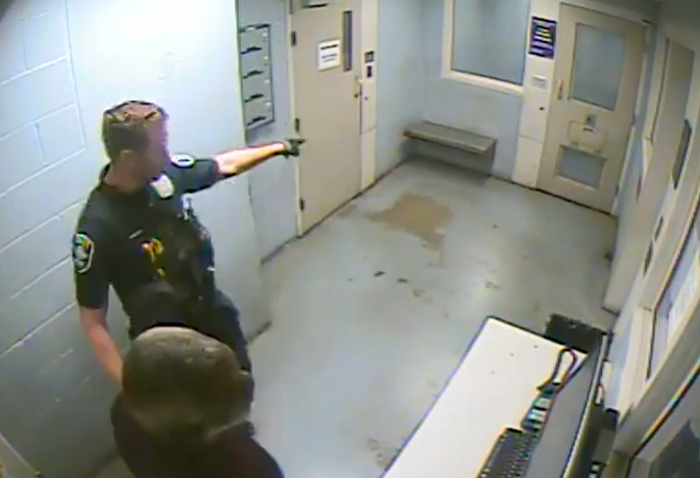
- Washington State Department of Transportation
- Cranes working on the Bertha rescue effort in November.
By the end of yesterday’s meeting between the Seattle City Council and the Washington State Department of Transportation, some council members’ frustration with the state agency was clear. Less clear was what they can actually do about our sinking Alaskan Way Viaduct.
To refresh: The Seattle Times reported on Friday that the Alaskan Way Viaduct settled about an inch in November, possibly due to “dewatering” of the soil around the rescue pit for our stuck tunnel-boring machine, Bertha.
WSDOT said repeatedly on Monday that the viaduct is still safe for drivers because most of the sinking is happening evenly, which doesn’t do the same damage as uneven sinking, which would cause the structure to twist. Basically: if we’re all sinking at the same rate, we’re fine. But the department still doesn't know exactly what caused the sinking and some council members complain they don't know how much the viaduct can sink before it's unsafe. When asked for a specific threshold (how much settlement is too much), WSDOT had no hard number to share. In lieu of that, officials promised to send the council copies of their contract with Seattle Tunneling Partners, which includes some language about specific sinking allowances. (Seattle Tunneling Partners is the company building the tunnel—and hey, conveniently, the two corporations that make up that partnership also bankrolled the campaign to approve the tunnel.)
Before yesterday’s meeting, Council Member Mike O’Brien, who’s long been an opponent of the tunnel project, told me he didn’t “have a lot of faith in WSDOT” and was considering hiring a third-party consultant to look at the safety of the viaduct and when it should be shut down. Today, he says he’ll give the city’s transportation department the chance to play that role before looking for someone else. Either way, he wants "someone working for the city, not the state, with no pressure on them to deliver the right answer." (He says he hasn’t considered any names for that job, though when I asked about Thom Neff, the consultant who warned the city about this project in 2010, O'Brien said Neff would "probably be worth checking in with regardless.")
The council has asked WSDOT to come back Monday to address, as Council Member Jean Godden put it, “the what ifs," including their plan for a temporary closure of the viaduct while tunnel work continues and, more terrifyingly, what they'll do if it collapses.
Something worth remembering here is that way back before the tunnel project was a sure-thing, then-governor Chris Gregoire promised to tear down the viaduct in 2012. That got rescheduled to 2016 when the council approved the tunnel project in 2011, but even as he voted to approve keeping the viaduct standing, then-Council President Richard Conlin acknowledged it was a death trap. If an earthquake hit Seattle, he warned, the viaduct could crumble the way Oakland’s Cypress Street Viaduct did in 1989. So, there's not disagreement about whether the viaduct is unsafe. It's about when it's too unsafe.
"The whole idea that WSDOT says it won't let people travel on it if it’s unsafe implies there is this line [between safe and unsafe]," O'Brien says. "That's not what’s going on. There's a spectrum of safeness and we’re definitely in the 'not as safe as we'd like to be' category, but it's not clear to me how far down that path someone is willing to go before they say we don’t want any more vehicles on it."
O'Brien and Jean Godden, who chairs the council's committee on the tunnel project, say they'll continue pushing WSDOT for more information. But could the council finally get fed up with the viaduct's riskiness and vote to shut it down? O'Brien says that's "premature."
Consider the fact that it's a state-regulated roadway and that, while O'Brien may have a new ally in Kshama Sawant, who has called the project "environmentally destructive," he was the only council member to vote against the tunnel project in 2011. All seven of the other current council members cast their 2011 votes for the tunnel.


















